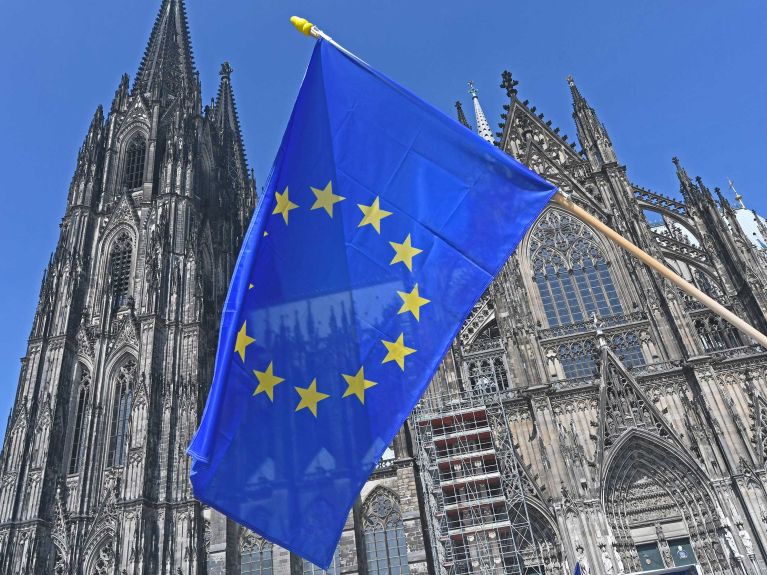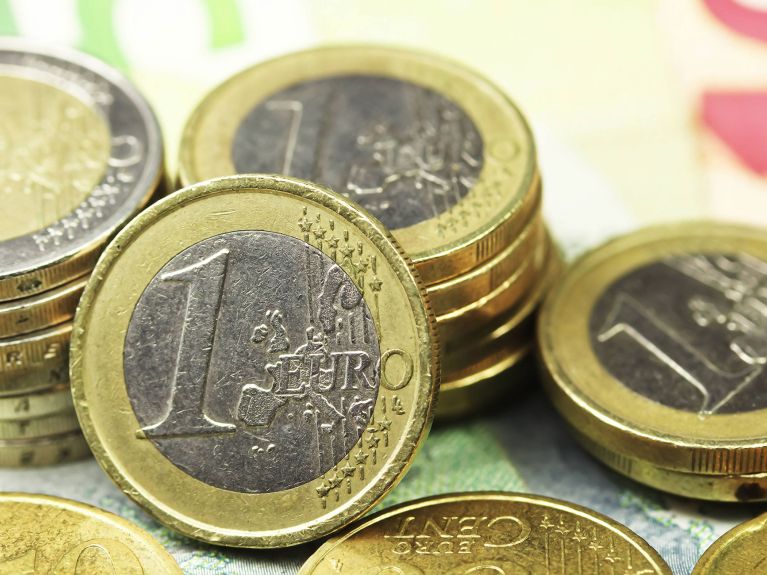The EU at a glance
European integration forms the foundation for peace, security and prosperity for Germany and the other EU member states

Success story
Ideas of European unification can be traced back far into the past. However, the present-day EU project only took concrete form with the foundation of the European Coal and Steel Community in 1952. Germany was a founding member. Over the course of time, cooperation was broadened to include other areas and the number of member states steadily increased in seven enlargements. The EU is currently conducting accession negotiations with further potential membership candidates.
Freedoms
The EU created the world’s largest single market, which is characterised by the four freedoms formulated in the 1958 Treaty of Rome: free movement of goods between EU member states, free movement of persons, freedom to establish and provide services within the territory of the EU and the free movement of capital. It is estimated that the EU’s share of global purchasing power-adjusted gross domestic product (GDP) will be roughly 14.85% in 2022.
The most important treaties
- 1952 European Coal and Steel Community
- 1958 Treaty of Rome
- 1993 European Single Market
- 1993 Treaty of Maastricht
- 1999 Treaty of Amsterdam
- 2003 Treaty of Nice
- 2009 Treaty of Lisbon
The political system
The political system of the EU is made up of several elements: the European Commission is the EU executive and the Court of Justice of the European Union the judiciary. While the governments of the member states are represented in the European Council and the Council of Ministers, citizens are represented directly by the European Parliament, which has been elected EU-wide every five years since 1979. The member states that have already adopted the euro also work together in the so-called Eurogroup. The offices of the most important political EU bodies are primarily located in Brussels, Strasbourg, Luxembourg and Frankfurt am Main. The symbol of the EU, the European Flag, consists of a circle of twelve five-pointed yellow stars on a blue field.
450 million
Some 450 million people currently live in the 27 member states of the EU. It therefore has the third largest population after China and India. EU citizens live on an area of roughly four million square kilometres. France is the largest EU country in terms of land area, while Germany is the most populous EU member state with 84.3 million inhabitants.
20 countries – 1 currency
The euro is the official currency for 340 million EU citizens in 20 EU member states. This group of countries form the eurozone. Following the euro crisis in 2010, efforts were increased to more closely coordinate and harmonise economic and financial policy within the EU. High national debt is considered a major challenge in many countries.

Defence and Security Policy
EU states work closely on many areas including security policy. Under the European Union Common Security and Defence Policy (CSDP), civilian specialists, police officers and military personnel contribute to peace and stability in a range of missions across Europe. The first mission, designated “Concordia” began in 2003 in what is now North Macedonia. Since then Germany has been involved in almost all CSDP missions.
Following Russia’s illegal invasion of Ukraine, the EU is endeavouring to collaborate more closely on defence and security. Amongst other things the German government is calling for the implementation of a strategic compass to specify the EU’s strategic objectives in this area.

